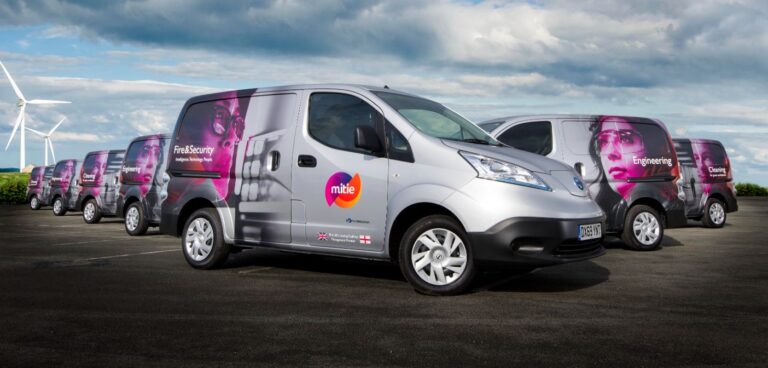UK facilities management company Mitie has achieved its target to convert 30% of its fleet to zero emission EVs by March 2022 three months ahead of schedule.
As a result, the business has increased its target to switch 35% of its fleet to electric in the same timeframe.
Mitie now has a range of electric cars, vans, and even a gritter, taking its total as of the end of 2021 to more than 2,000 EVs. Its fleet consists of 15 different models.
The vehicles are based throughout the UK, from the Scottish Highlands and Islands down to the Cornish coast, as well as EVs working on Mitie’s contracts supporting the UK’s overseas territories, including Ascension Island.
Peter Dickinson, chief of staff, Mitie, said: “Switching 30% of our fleet to electric by the end of March 2022 was already an ambitious target, so to have hit this milestone three months ahead of schedule is an incredible achievement and testament to the hard work of the Mitie fleet team.”
The transition to a wholly electric fleet is a central component of Mitie’s Plan Zero commitment to eliminate carbon emissions from its power and transport. Its current fleet of EVs reduces Mitie’s annual CO2 emissions by around 10,000 tonnes and the business has a detailed timeline to switch the rest of its vehicles to zero emission by 2025.
Furthermore, Mitie has invested in the UK’s EV charge point infrastructure, installing thousands of charge points for a broad range of its customers, as well as at employees’ homes.
Dickinson added: “Pushing ourselves to go further, faster, while bringing others along with us on our journey to net zero, is a hallmark of our Plan Zero commitment. By creating the UK’s largest fleet of electric vehicles in just three years, we’re dedicated to sharing our first-hand expertise and learnings with our customers to help decarbonise Britain.”
The company has also put a series of measures in place to reduce the emissions of its existing petrol and diesel vehicles, such as a telematics driver behaviour system that has reduced diesel consumption by 75,000 litres and saved 19.5 tonnes of CO2 in one year.





